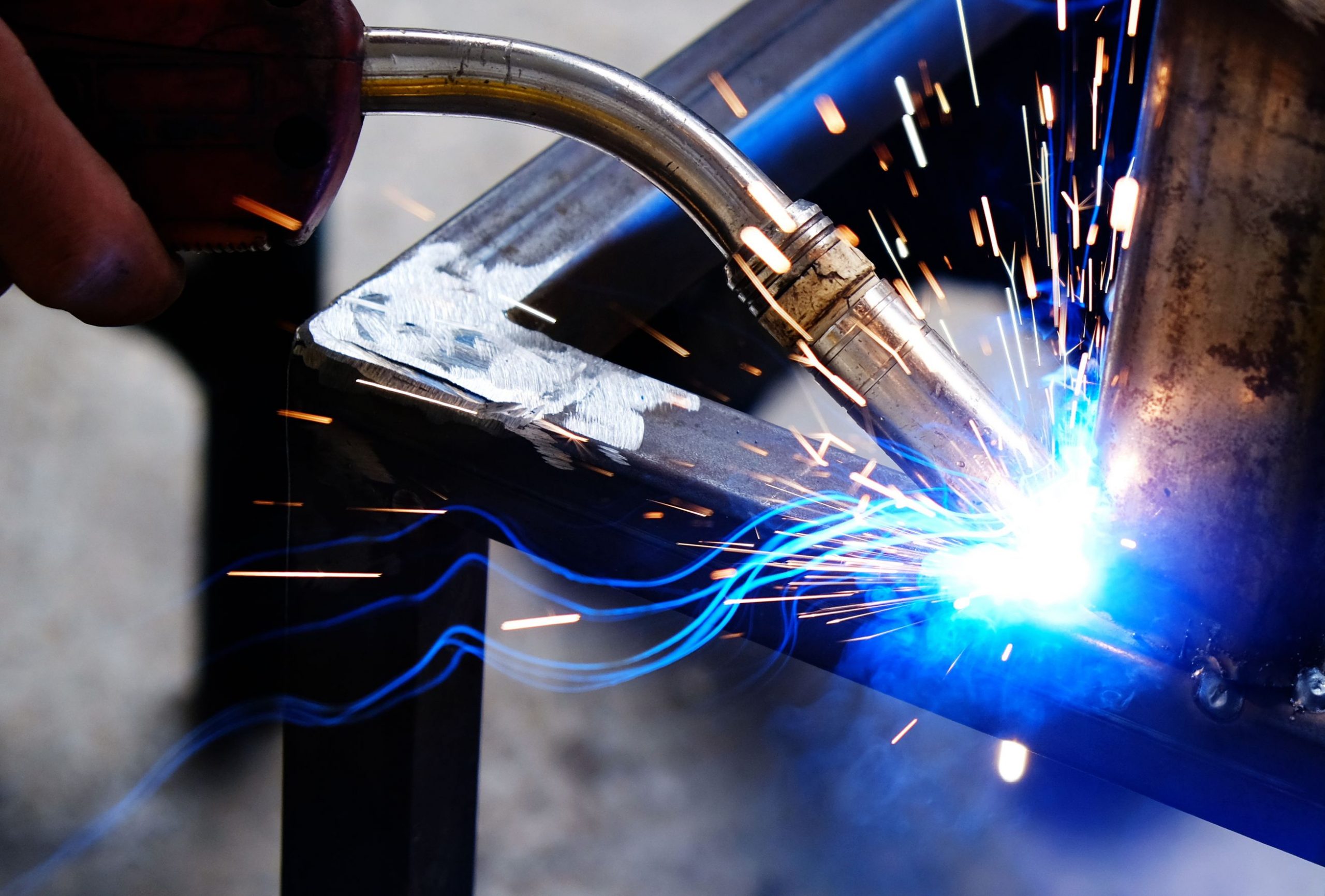During metal arc welding and tungsten arc welding processes, atmospheric gases like oxygen and water vapour may interfere, reducing the quality of the weld area or making welding difficult. Shielding gas is a group of inert or semi-inert gases that protect the weld area from coming in contact with the atmosphere. They are also known as inert metal gases (MIG) or tungsten inert gases (TIG) due to their immense utility in gas metal arc welding (GMAW) and gas tungsten arc welding (GTAW) processes, respectively.
Types of Shielding Gases
Shielding gases primarily fall under two categories — inert and semi-inert.
Inert Shielding Gases
Inert gases like helium and argon are extensively used in gas tungsten arc welding and welding of some non-iron metals. Pure argon can be used with aluminium and non-ferrous metals to shield flat welds or deep grooves, whereas pure helium can shield copper, magnesium, and aluminium welds.
Semi-inert Shielding Gases
Semi-inert or active shielding gases like nitrogen, oxygen, hydrogen, and carbon dioxide are used to shield welds of ferrous metals. Hydrogen produces a smoother weld surface and better bead profiles, whereas nitrogen enhances weld penetration and stability of arc. Though the oxidising properties of oxygen make it unsuitable for shielding welds of copper, magnesium, and aluminium, oxygen mixtures can be used to stabilise arcs and improve the transfer of metals.
5 Effects of Shielding Gas
With a brief overview of shielding gas, let’s discuss its effects in metal welding.
Boosting Metal Deposition Rate and Efficiency
Shielding gas mixtures with a higher percentage of argon results in increased productivity. The gas should be chosen carefully with an argon content of 85% or more to achieve spray transfer in horizontal welding positions. Contrary to argon-carbon dioxide or argon-oxygen mixtures, a helium-enhanced argon mixture may enhance weld metal deposition rates up to 15%. Electrode deposition efficiency may also be increased by optimising parameters like gas flow rate and voltage.
Minimise Spatter and Postweld Cleaning
Due to its low ionisation potential, using argon as a shielding gas enhances arc stability and helps in minimising spatter with conventional power supplies. The operating current and voltage may increase by 10% while maintaining the spatter control with argon-based shielding gases. An optimal gas blend with 85% or more argon content may also help reduce post-weld grinding, thereby checking on cost.
Bead Profile and Overwelding
Argon-based blends of shielding gases give suitable shapes to beads, thereby reducing overwelding. A large bead can raise welding costs by at least 50%. Argon-rich blends tend to produce flat bead faces, thereby reducing welding costs.
Bead Penetration
While welding thin materials, the content of shielding gases blend becomes essential. Pure carbon dioxide helps achieve greater penetration and increases weld pool energy. That’s why an argon blend containing 15 to 20% CO2 contributes to deeper penetration and improved welding productivity while minimising the risk of burn-through.
Fume Generation
Factors like filler metal, base metal composition, and shielding gas may influence welding fume generation rates. High argon-based blends are less reactive than pure gases and generate lesser fumes under similar conditions.
Shielding gases like helium, argon, carbon dioxide, oxygen, nitrogen, or hydrogen are used in mixtures to optimise their content and produce the most satisfactory results in shielding metal welds from oxidising by atmospheric gases. They improve the quality of the weld area, boost metal deposition, minimise spatter, and reduce welding costs with good bead profiles.

